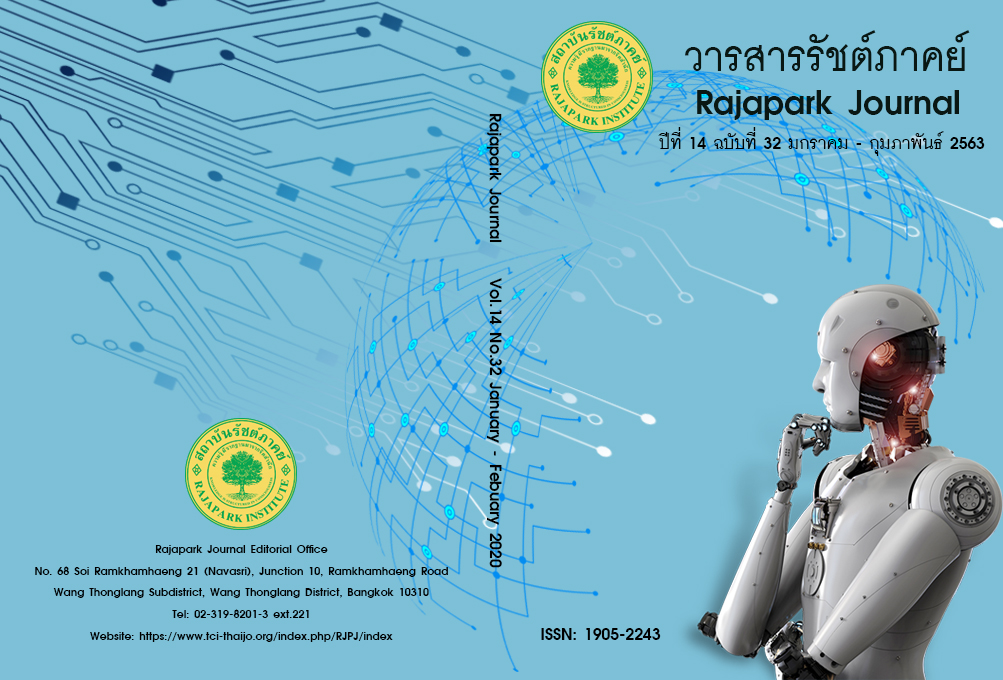The Rubber Development Policy Making in Thailand
Main Article Content
Abstract
In this research, the researcher examines and analyzes procedures for the policy making of the rubber development in the Kingdom of Thailand. In this qualitative investigation, the researcher collected data from document and carried out in-depth interviews if key informants from the Natural Rubber Policy Committee (NRPC). These key informants were eighteen representatives from concerned government agencies, representatives from the private sector, and representatives from the agriculturalist sector. Summarily speaking, findings show that procedures for the policy making of the rubber development consisted of four steps as follows: 1) Problem identification 2) agenda setting 3) and 4) Policy adoption The researcher would like to proffer the following recommendations: should amen In the policy making of the rubber development in Thailand, the public sector should amend the law, so that it is in consonance with the current situation. The system used for collecting data should be unified in order that it can be utilized for accurate decision-making procedures in planning the development of rubber in Thailand. The participation of stakeholders and the process of holding public problem hearing are important, especially in designing policy that is in consonance with the needs of rubber stakeholders in Thailand.
Article Details

This work is licensed under a Creative Commons Attribution-NonCommercial-NoDerivatives 4.0 International License.
Views and opinions appearing in the Journal it is the responsibility of the author of the article, and does not constitute the view and responsibility of the editorial team.
References
Arshed, N., Carter, S., & Mason, C. (2014). The Ineffectiveness of Entrepreneurship Policy: Is Policy Formulation to Blame? . Small Business Economics, 43(3), 639-659. DoI: 10.1007/s11187-014-9554-8
Chuto, N. (2002). Qualitative Research. Bangkok: Matt Poet Publishing.
Colebatch, H. K. (2006). Beyond the policy cycle: The policy process in Australia. Sydney, Australia: Allen and Unwin.
Diez, J. (2010). The importance of policy frames in contentious politics: Mexico’s national antihomophobia campaign. Latin American Research Review, 45(1), 33-54.
Dunn, W. N. (2004). Public Policy Analysis: An Introduction. Upper Saddle River, NJ: Prentice Hall.
Dye, T. R. (1995). Understanding public policy. (8th ed.). Englewood Cliffs, NJ: Prentice Hall.
Guy, P. B. (2013). American public policy: Promise and performance (9th ed). London: Sage.
Irwin, G. L. (2003). The Policy Analyst's Handbook: Rational Problem Solving in a Political World. New York: M.E. Sharpe.
Jensen, J. L. (2007). Getting one’s way in policy debates: Influence tactics use in group decision-making settings. Public Administration Review, 67(2), 216-227.
Koundouraki, E. (2007). The Information Cycle in the Policy-Making Process of the European Commission Information Research, 12(4) poster colisp07. http://InformationR.net/ir/12-4/colis/colisp07.html
Longest, B. B., & Huber, G. A. (2010). Schools of public health and the health of the public: Enhancing the capabilities of faculty to be influential in policy making. American Journal of Public Health, 100(1), 49-53.
Peter, B. & Glyn, D. (2000). The Australian Policy Handbook. (2nd ed.). Victoria: McPherson.
Ramesh, G. (2008). Policy implementation frame: A revisit. South Asian Journal of Management, 15(1), 42-63.
Roger, E. B., Joyce, Matt, E., & Megan, L. (2008). Fiscal Realities for the State and Local Governments. Business Economics; Basingstoke, 43(2).
Rubber Estate Organization. (2015). History of Rubber. Retrieved June 20, 2015, from www.reothai.co.th
Songprasert, P. (1992). Singapore Capital: The Monopoly of the Thai Rubber and Tin Market. Bangkok: Chulalongkorn University.
The standing committees of the National Legislative Assembly. (2012). Guidelines for managing low-lying rubber problems and guidelines for promoting the development of the whole system of rubber. Bangkok: Secretariat of the Senate.
Walke, W. (2000). Policy analysis: A systematic approach to supporting policy making in the public sector. Journal of Multi-Criteria Decision Analysis, 9(13), 11-17.


